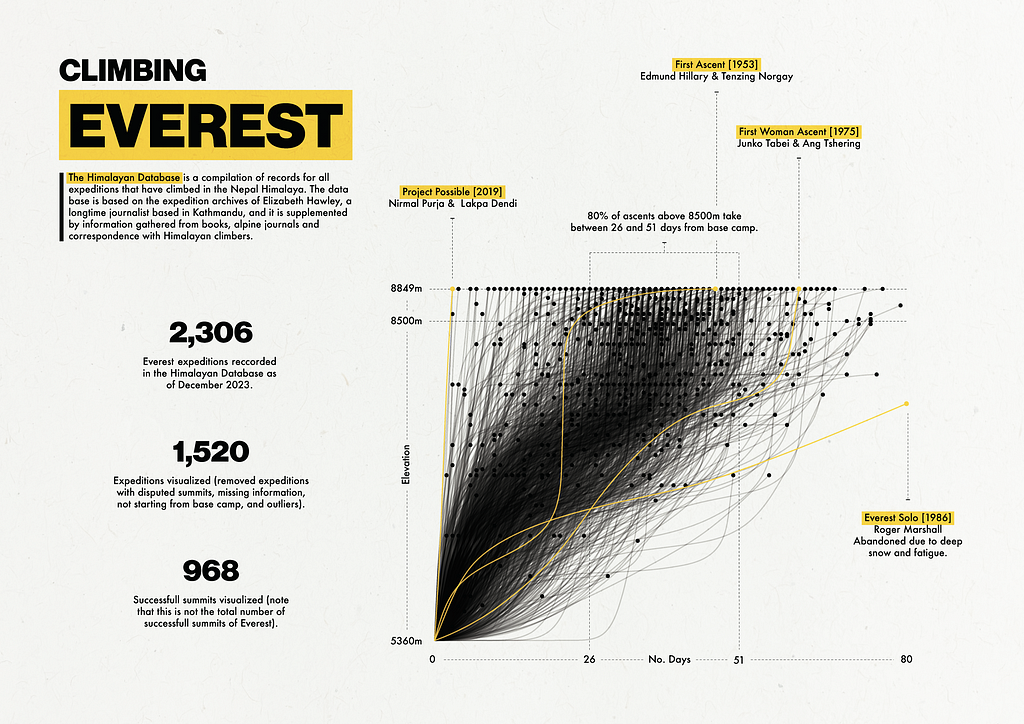Summary:
The text discusses the process of gathering expedition data from The Himalayan Database and using it to create visualizations of Everest expeditions’ elevation profiles. It includes extracting and processing relevant data, reconstructing elevation profiles, and visualizing the waypoints. The process involves using Python for data processing, plotting, and Illustrator and Photoshop for final adjustments and layout.
Word count: 215

“`html
An End-To-End Data Visualization Project
Getting The Data
While looking for datasets related to mountaineering, stumbled across The Himalayan Database. There are two main ways to access the data:
- Download an application with embedded data (doing this on Mac requires installing a compatibility layer to run Windows applications).
- Using the Himalayan Database Online, which allows you to access data by clicking through buttons and options.
Worthwhile to note that the Himalayan website says this about the second option: “The Himalayan Database Online is a subset of the downloadable version of the Himalayan Database that provides the most commonly used features of the database. This will make the database more accessible for many users, especially for those with tablets and smartphones.”
Exploring Potentially Relevant Columns
Selected a few columns that could help corroborate/contradict/complete the campsite information. The final dataframe had the following 9 columns:
- expid & year
- campsites
- termreason
- bcdate, smtdate, & highpoint
- disputed & claimed
Issues With The “campsites” Field
Missing Dates & Elevations, Missing Information Altogether, Multiple Teams
Reconstructing Elevation Profiles
After interpolating the value of y using a monotonic cubic spline and plotting with matplotlib, the final plot looked something like this:
Edit In Illustrator & Photoshop
After saving the previous plot as an SVG, you can open it in Adobe Illustrator and make necessary adjustments. As a final touch, exported the image as PNG and added a paper texture in Photoshop.
Final Thoughts
Creating this visualization was relatively straightforward: both data processing and plotting were done in Python with the layout designed in Illustrator and final touches (texture) added in Photoshop.
If you want to evolve your company with AI, stay competitive, use for your advantage Visualizing Everest Expeditions.
Discover how AI can redefine your company’s way of work. Identify Automation Opportunities, Define KPIs, Select an AI Solution, Implement Gradually.
For AI KPI management advice, connect with us at hello@itinai.com. And for continuous insights into leveraging AI, stay tuned on our Telegram t.me/itinainews or Twitter @itinaicom.
Spotlight on a Practical AI Solution: AI Sales Bot from itinai.com/aisalesbot designed to automate customer engagement 24/7 and manage interactions across all customer journey stages.
Discover how AI can redefine your sales processes and customer engagement. Explore solutions at itinai.com.
“`


























